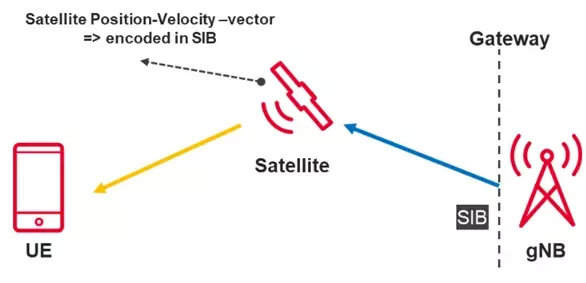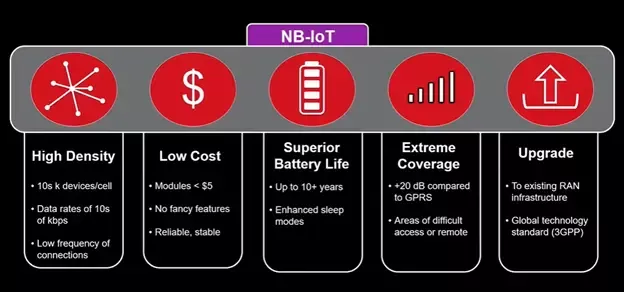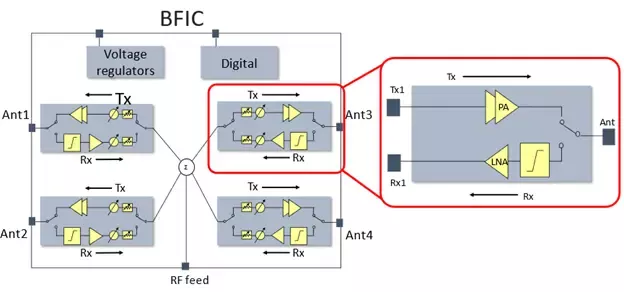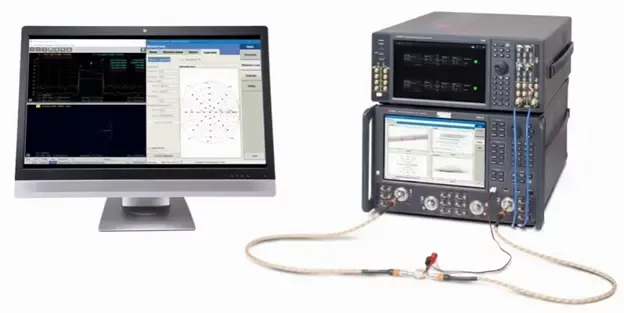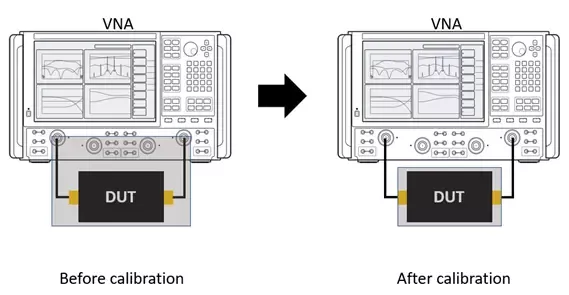Wireless Technology Insights: Navigating the Evolution From 5G to 6G
By Gabrielle Duncan, Network Analyzer Product Marketing Manager
As 5G evolution advances, developments like the open radio access network (O-RAN) ecosystem, non-terrestrial network (NTN) infrastructure, and 5G reduced capability (RedCap) devices continue to gain momentum. Though 5G implementation is still underway, the wireless communication industry is already preparing for next-generation 6G wireless technology.
With so much development happening all at once, it’s difficult to keep up. During the Keysight Wireless Tech Days virtual event, subject matter experts explained design and development principles essential for today’s RF engineers.
Take Your Designs to Release 17
Third Generation Partnership Project (3GPP) Release 17 enhancements enable new classes of 5G wireless devices. Cellular service providers continue to develop NTN technology in their effort to provide ubiquitous coverage around the world. Once fully deployed, the impact of NTN infrastructure will revolutionize numerous technologies, from emergency service systems to shipping and logistics tracking.
5G NTN intends to provide satellite service to billions of mobile phone subscribers worldwide. However, there are three critical challenges 5G NTN technology must address:
- Doppler shift
- time varying path delay
- time varying path attenuation
In 5G NTN, the network adjusts the timing of the radio frames to match the user location and pre-compensates part of the link frequency error caused by the satellite movement. These adjustments make it easier for the user terminal to tolerate the satellite link characteristics. Network broadcast system information blocks (SIBs), which store information about satellite locations and velocities, enable the cell phone to estimate link conditions, the delay of the satellite link, and Doppler error in transmission frequency.
On the first day of Wireless Tech Days, application engineer Randy Becker described how to test the compliance of 3GPP enhanced handsets with the Keysight NTN testbed. The demonstration showcased how to capture delay and error measurements, as well as demodulated uplink signal constellation, spectrum, error vector magnitude (EVM), and uplink / downlink throughput. Additionally, Randy tested how the NTN handset performed SMS and video streaming functionalities.
Also on day one, Manuel Blanco, 5G strategic planner, discussed narrow-band internet of things (NB-IoT) applications within NTN. While originally envisioned as a technology to connect low-cost IoT devices with limited power consumption and throughput requirements, developers plan to use NB-IoT over NTN as a means to support ubiquitous coverage to mobile handsets for texting, voice communication, and multicast firmware updates.
Manuel demonstrated how to use the UXM 5G network emulator for in the lab satellite emulation while testing a NB-IoT enabled cell phone for off-grid scenarios. The demonstration covered geostationary orbits (GSO) and non-geostationary orbit (NGSO). Manuel walked through how to configure an NB-IoT cell to an NTN cell with varying delay and Doppler settings. In addition to uplink / downlink throughput and block error ratio (BLER), EVM, and frequency error measurements, Miguel-Angel Guijarro, 5G product manager, detailed conformance testing and automation on the Keysight platform.
Check out the latest on NTN here: keysight.com/find/ntn
Take Open RAN to the Next Level
The evolution of Open RAN as defined by the O-RAN Alliance continues to reshape radio access networks. Open RAN has enormous implications for increasing network energy efficiency, which was the main focus of day two of Wireless Tech Days. O-RAN equipment requires three different test categories:
- O-RAN conformance
- 3GPP conformance
- energy efficiency testing
O-RAN conformance testing focuses mainly on protocol, while 3GPP conformance tests deal primarily with RF performance. Energy efficiency testing requires engineers to measure energy consumption together with protocol and RF performance. To optimize communication system energy efficiency, equipment manufacturers and network operators must:
- address disparate requirements efficiently
- test and correlate data across different domains: RF, protocol, and energy plane (E-plane)
- automate tests to keep up with the high rate of innovation
Engineers need a unified test strategy that enables them to measure their radio performance against three different standards, and then cross-correlate the results. Beyond that, developers need to automate their test strategy for optimal regression testing across firmware releases.
Jean Dassonville, RAN solution planner, demonstrated static O-RAN radio unit testing using the Keysight E-plane testbed. This solution leverages 3GPP and O-RAN solutions and extends capabilities to the E-plane.
Included in the automated solution platform, a time sync analyzer functions as a distributed unit (O-DU) emulator while a regenerative power system is used to perform the DC measurement. The RF power sensor is time synchronized with the O-DU emulator for time gated measurements.
Learn more about Open Ran here: Deep Dive into O-RAN
Take Component Testing From 5G to 6G
On the final day of Wireless Tech Days, Nizar Messaoudi, Heather Richardson, Afsi Moaveni, and Dr. Joel Dunsmore discussed how Keysight network analysis solutions enable cutting-edge component insights while simplifying the test setup.
Nizar, VNA product manager, demonstrated transmit / receive (T / R) module, low noise amplifier (LNA), and power amplifier (PA) characterization use cases for the new Keysight ENA-X network analyzer. T / R modules support modern communication system performance through three key functions:
- boosting transmission signals to the maximum radiated power
- establishing system noise figure during receive operations
- providing beam steering control and angular accuracy
A power amplifier occupies the last stage of the transmitter, while the LNA is the first stage of the receiver. As a result, the PA determines the overall transmitter distortion and the LNA limits the receiver sensitivity. Furthermore, the DC power consumption of the power amplifier is the largest determining factor of the overall efficiency of the T / R module. Though many component parts contribute to successful T / R module operations—phase shifters, attenuators, limiters—the amplifiers most strictly limit the modules transmit and receive performance. So, to optimize the performance of a T / R module, shown in Figure 5 used in a phased array application, engineers must start by characterizing the receiver LNA and transmitter PA.
Characterizing T / R module behavior places high demands on a test system’s performance and flexibility. The test system needs to support both transmit and receive test modes while maintaining accuracy and maximizing throughput.
In the demonstrations, Nizar showed how the ENA-X network analyzer, MXG signal generator, and modulation distortion (MOD) software work together to deliver accurately calibrated wideband signals needed for precise PA, LNA, and T / R module measurements. The integrated upconverter at port 1 of the ENA-X takes the modulated signal from the MXG and raises it to a maximum frequency of 44 GHz. The ENA-X's wide dynamic range and vector error correction minimizes the test-set EVM, ensuring a clear assessment of the PA and LNA performance without any interference from the test set. For even faster characterization of the amplifiers, the ENA-X enables EVM with optional demodulation using the MOD software, which breaks down linear and nonlinear signal components with spectral correlation.
To simplify noise figure calibration, the ENA-X offers two integrated low-noise receivers to reduce fixturing and enable the ENA-X to measure the T / R module in either direction. By connecting and calibrating the test set just once, engineers collect standard network analysis measurements in conjunction with the cold-source noise figure.
In the next demonstration, Afsi, senior application engineer, and Dr. Joel, Keysight research fellow, demonstrated power amplifier characterization on the multiport PXI VNA. With similar features to the ENA-X network analyzer, the PXI VNA additionally offers a configurable platform ideal for manufacturing applications. During the demonstration, Dr. Joel highlighted the direct receiver access available on the PXI network analyzer. The direct receiver access allows engineers to loop booster amplifiers or directional couplers into the measurement while maintaining the quality of the incident modulated signal and the VNA calibration of the internal receivers.
Heather, application engineer, used the high performance Keysight PNA-X network analyzer wideband active load pull solution to test a power amplifier. Amplifier designers need to test their device under variable load conditions for robustness and degradation testing. Building on the capbilities of the modulation distortion software, Heather demonstrated how to use the PNA-X VNA and dual channel Keysight VXG signal generator to control the gamma load conditions across the entire modulation bandwidth while measuring low-residual EVM.
To achieve the wireless telepresence and massive connectivity promised in 6G, greater bandwidth and spectral efficiency are paramount. To develop 6G components that maximize bandwidth utilization, engineers need a test platform that handles additional noise power. In the final demonstration of Wireless Tech Days, Sarah Laselva, 6G marketing director, and Benjamin Schoch, research scientist from the University of Stuttgart, showed how the 6G Vector Component Analysis (VCA) solution characterizes H-band amplifiers under wideband modulated signal stimulus. The demo showcased the 6G VCA solution’s ability to move the test reference plane to that of the device under test, enabling greater performance measurement accuracy.
Take Your Next Step Towards Innovation
As ongoing advancements in 5G technology including the O-RAN ecosystem, NTN infrastructure, and 5G RedCap devices rapidly gain traction, engineers must keep up with evolving standards. While 5G implementation progresses, the communication industry is already setting its sights on the next generation, 6G wireless technology.
With this rapid pace of development, staying informed with the latest information is challenging. Navigate the ever-evolving wireless technology landscape with the help of industry experts. Check out Keysight Wireless Tech Days virtual event on-demand for crucial insights into fundamental RF design and development principles.


